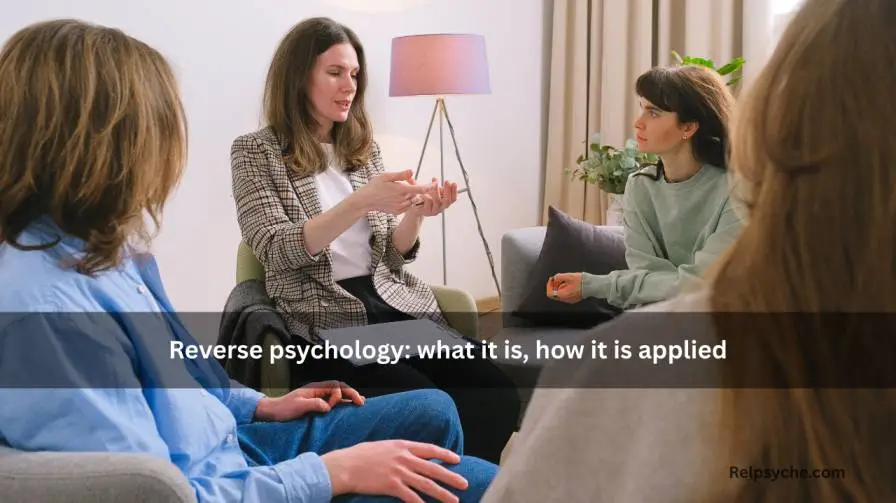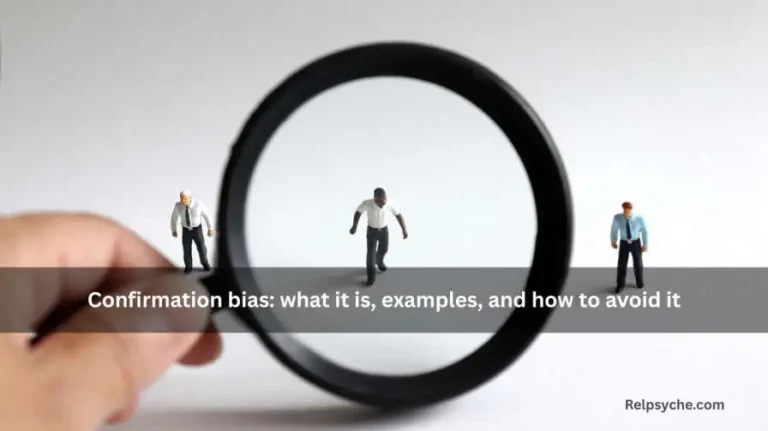Reverse psychology: what it is, how it is applied
Reverse psychology is a communication method that involves asking someone to perform an action contrary to the sender’s intentions, thereby achieving a favorable outcome. To apply this technique, it is important to define the desired goals and analyze the person receiving the message. Sometimes, it is necessary to modify certain words when speaking to children, adolescents, and adults, as they have different reasoning styles.
In specific everyday situations, this resource can be useful for people who are reluctant to accept obligations and commands. If you find yourself in a situation that requires a different strategy, this information will be helpful. In this Psychology-Online article, we’ll provide information about reverse psychology: what it is, how it’s applied, and examples.
Table of Contents
What is reverse psychology?
Reverse psychology is a communication method that seeks to produce the opposite effect of a statement made by a person . In this way, the ultimate goal is to get someone to perform a desired action without the need to force or question the person.
Reverse psychology emerges as a behavioral alternative to conflicting situations in everyday life. In most situations, one person displays reluctance, disinterest, or apathy in response to comments received from another. Because of this, it has been observed that a person’s insistence on convincing others reinforces these behaviors.
Generally speaking, it has been shown that some disobedient people can accept social norms if they receive orders differently. This can be applied to children, adolescents, and adults who display a rigid, inflexible, and change-resistant personality.
While this communication technique can have different effects in each case, some mental health professionals may include it in psychological treatments to analyze and modify behaviors that affect interpersonal relationships.
How is reverse psychology applied?
To achieve a favorable outcome, you should know that reverse psychology must be applied through a series of recommended steps. In this section, we’ll present some available options:
- Define objectives : Before contacting the person, it’s important to consider your desired goal. This will allow you to choose the right time and words for your communication.
- Age range : First, you need to consider the age of the person you’re practicing reverse psychology with. Furthermore, children, adolescents, and adults can understand certain phrases with different emotions.
- Analyzing emotions and behaviors : When faced with a conflict situation, you must understand how a person responds. Gathering data will help you determine if anxiety, anger, indifference, and/or any other emotion that interferes with actions may arise. Behaviors can include avoidance, isolation, confrontation, and mockery, among others.
- Mentioning an idea contrary to the initial objective : If the audience is children or adolescents, clarity in the message can favor the desired result. To achieve this, it is necessary to avoid an imperative tone of voice, as well as a rigid posture that implies an order or obligation.
Beyond the above description, you should know that the application of reverse psychology can benefit or harm a person’s behavior. In this sense, it is essential to consider the social context in which a person lives. If you have any questions, we suggest consulting a specialized mental health professional.
Examples of reverse psychology
Although the use of reverse psychology can be difficult to understand, there are common everyday situations that occur. Below, we’ll present three simple examples of reverse psychology :
- A child doesn’t want to eat vegetables, and his mother is angry. To achieve this, an alternative is to say things like, “I don’t mind you not eating your vegetables. Popeye ate spinach and his muscles grew, but that was back in the day.”
- A teenager wants to go to a nightclub with her friends and drink large amounts of alcohol. When she tells her parents about this intention, they are concerned and insist that she not go out. If the teenager is reticent and rebellious when faced with orders, they may not succeed. However, reverse psychology can be applied through statements like, “You can go out as often as you want, drink as much alcohol as you want, maybe that’s the lifestyle you want.”
- An elderly man has a heart condition and hasn’t had medical checkups for several years. Because his children are worried, he may continue his life without the need to visit a doctor. To apply reverse psychology correctly, you can use phrases like, “Don’t go to the doctor for anything in the world. I want to go on a trip and have no worries in my life.”
This article is for informational purposes only; Psychology-Online does not have the authority to diagnose or recommend treatment. We encourage you to consult a psychologist to discuss your specific case.

Conclusion
In conclusion, reverse psychology is a powerful communication tool that can encourage positive behavior when direct commands fail. It works by suggesting the opposite of what you want, which often makes the other person choose the intended action on their own. This technique can be useful with children, teenagers, and even adults who are resistant to rules or expectations.
However, reverse psychology should be used wisely. If it is overused or applied in a manipulative way, it can damage trust and create conflict instead of solving it. The best results come when reverse psychology is combined with empathy, respect, and understanding of the other person’s emotions. Used carefully, it can strengthen relationships, reduce arguments, and make communication smoother.
Ready to take the next step in your personal growth? Explore expert services — from therapy to life coaching — available on Fiverr.
If you want to read more articles similar to Reverse psychology: what it is, how it is applied, You Need to Know we recommend that you enter our Psychology category.
FAQs
Q1: Is reverse psychology always effective?
Not in every situation. Reverse psychology tends to work best with people who are resistant or rebellious by nature. For example, children who dislike being told what to do may respond better when given an opposite suggestion. However, some people may ignore it or even recognize the tactic, making it less effective.
Q2: Can reverse psychology work on children?
Yes, it can, especially when children refuse to follow direct instructions. For instance, instead of saying, “Eat your vegetables,” a parent might say, “I don’t think you’ll like these vegetables.” The child may then choose to try them. Still, it’s important to use this approach gently, without making the child feel tricked or controlled.
Q3: Is reverse psychology safe in romantic relationships?
It can sometimes help reduce tension in a relationship if used lightly and with humor. However, if reverse psychology is used too often, it may create mistrust and make a partner feel manipulated. Open and honest communication should always be the main way to solve relationship challenges.
Q4: Do psychologists actually use reverse psychology in therapy?
Some psychologists may use reverse psychology as part of cognitive or behavioral therapy, but it is not the main method. It is applied only in certain cases where it helps clients explore new ways of thinking or reduce resistance to change. It’s usually done in a careful and professional manner.
Q5: Can reverse psychology backfire?
Yes, it can. If the person realizes they are being manipulated, they may feel upset, embarrassed, or less trusting. In some cases, it may even make the unwanted behavior stronger. That’s why reverse psychology should be used sparingly and only when it truly benefits the situation.
Q6: What are some everyday examples of reverse psychology?
Common examples include parents telling children they probably won’t enjoy a certain food, which can make them curious to try it. Another example is telling a teenager they don’t have to study, which might push them to prove they are responsible. Adults may also use it in friendships or workplaces to encourage positive action without sounding bossy.
Q7: When should reverse psychology be avoided?
It should be avoided in situations that require honesty and trust, such as in serious relationships or when someone is struggling with mental health challenges. In those cases, open conversation and support are much better than indirect communication.
References
- Baron, R. A. (1996). Psychology (3rd ed.). Allyn & Bacon.
- Cialdini, R. B. (2009). Influence: Science and Practice. Pearson Education.
- McRaney, D. (2011). You Are Not So Smart. Gotham Books.
- Kazdin, A. E. (2001). Behavior Modification in Applied Settings. Wadsworth.
- American Psychological Association. (2023). Communication strategies in psychology. Retrieved from https://www.apa.org

I’m Emma Johnson, a psychologist who loves to write and share ideas.
I enjoy making psychology simple so everyone can understand and use it in daily life.
If you’d like to talk, ask questions, or work together, feel free to reach out.
Let’s learn and grow in the world of psychology together!







